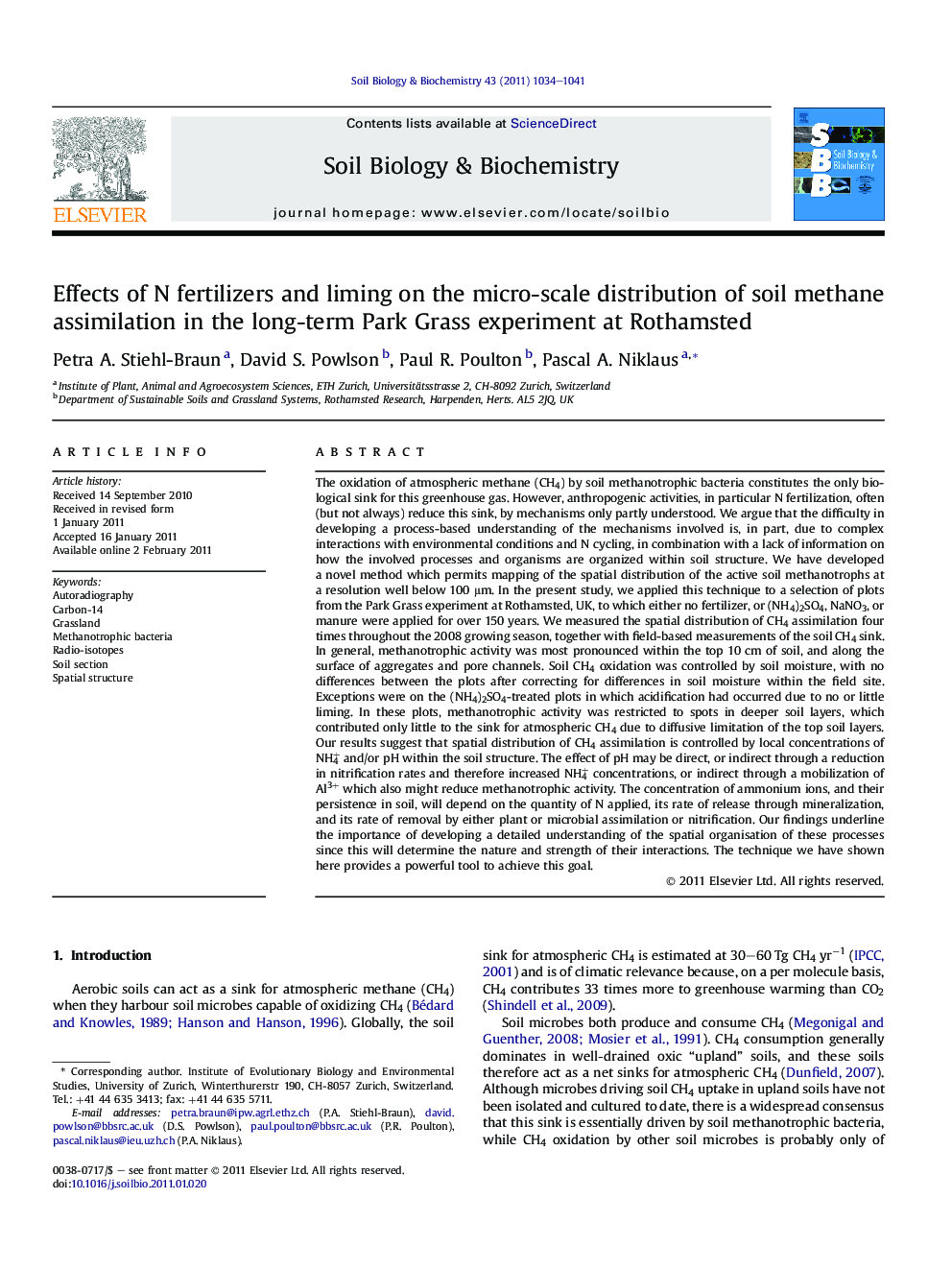| Article ID | Journal | Published Year | Pages | File Type |
|---|---|---|---|---|
| 2025524 | Soil Biology and Biochemistry | 2011 | 8 Pages |
The oxidation of atmospheric methane (CH4) by soil methanotrophic bacteria constitutes the only biological sink for this greenhouse gas. However, anthropogenic activities, in particular N fertilization, often (but not always) reduce this sink, by mechanisms only partly understood. We argue that the difficulty in developing a process-based understanding of the mechanisms involved is, in part, due to complex interactions with environmental conditions and N cycling, in combination with a lack of information on how the involved processes and organisms are organized within soil structure. We have developed a novel method which permits mapping of the spatial distribution of the active soil methanotrophs at a resolution well below 100 μm. In the present study, we applied this technique to a selection of plots from the Park Grass experiment at Rothamsted, UK, to which either no fertilizer, or (NH4)2SO4, NaNO3, or manure were applied for over 150 years. We measured the spatial distribution of CH4 assimilation four times throughout the 2008 growing season, together with field-based measurements of the soil CH4 sink. In general, methanotrophic activity was most pronounced within the top 10 cm of soil, and along the surface of aggregates and pore channels. Soil CH4 oxidation was controlled by soil moisture, with no differences between the plots after correcting for differences in soil moisture within the field site. Exceptions were on the (NH4)2SO4-treated plots in which acidification had occurred due to no or little liming. In these plots, methanotrophic activity was restricted to spots in deeper soil layers, which contributed only little to the sink for atmospheric CH4 due to diffusive limitation of the top soil layers. Our results suggest that spatial distribution of CH4 assimilation is controlled by local concentrations of NH4+ and/or pH within the soil structure. The effect of pH may be direct, or indirect through a reduction in nitrification rates and therefore increased NH4+ concentrations, or indirect through a mobilization of Al3+ which also might reduce methanotrophic activity. The concentration of ammonium ions, and their persistence in soil, will depend on the quantity of N applied, its rate of release through mineralization, and its rate of removal by either plant or microbial assimilation or nitrification. Our findings underline the importance of developing a detailed understanding of the spatial organisation of these processes since this will determine the nature and strength of their interactions. The technique we have shown here provides a powerful tool to achieve this goal.
Research highlights► Mapping of spatial distribution of methane oxidation at sub-millimeter scale. ► Active methanotrophs heterogeneously distributed in soil. ► NH4+ fertilization shifts zone of CH4 oxidation down when soil not limed. ► CH4 oxidation at Park Grass generally regulated by soil moisture.
